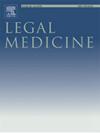Research progress and application of the third-generation sequencing technologies in forensic medicine
IF 1.3
4区 医学
Q3 MEDICINE, LEGAL
引用次数: 0
Abstract
Third-generation sequencing technologies, exemplified by single-molecule real-time sequencing and nanopore sequencing, provide a constellation of advantages, including long read lengths, high throughput, real-time sequencing capabilities, and remarkable portability. These cutting-edge methodologies have provided new tools for genomic analysis in forensic medicine. To gain a comprehensive understanding of the current applications and cutting-edge trends of third-generation sequencing technologies in forensic medicine, this study retrieved relevant literature from the China National Knowledge Infrastructure (CNKI) database and the Web of Science (WOS) database. Using bibliometric software CiteSpace 6.1.R6, the study visualized publication volume, countries, and keywords related to the application of third-generation sequencing technologies in forensic medicine from 2014 to 2023. The review then summarized the foundational principles, characteristics, and promising prospects of third-generation sequencing technologies in forensic medicine. Notably, it highlights their remarkable contributions in forensic individual identification, body fluid identification, forensic epigenetic analysis, microbial analysis and forensic species identification.
第三代测序技术在法医学中的研究进展和应用
以单分子实时测序和纳米孔测序为代表的第三代测序技术具有多种优势,包括长读取长度、高通量、实时测序能力和出色的便携性。这些尖端方法为法医学基因组分析提供了新工具。为了全面了解第三代测序技术在法医学中的应用现状和前沿趋势,本研究从中国国家知识基础设施(CNKI)数据库和科学网(WOS)数据库中检索了相关文献。研究使用文献计量软件CiteSpace 6.1.R6,对2014年至2023年与第三代测序技术在法医学中的应用相关的发表量、国家和关键词进行了可视化分析。然后,综述总结了第三代测序技术在法医学中的基本原理、特点和广阔前景。特别是,它强调了第三代测序技术在法医个体鉴定、体液鉴定、法医表观遗传分析、微生物分析和法医物种鉴定方面的突出贡献。
本文章由计算机程序翻译,如有差异,请以英文原文为准。
求助全文
约1分钟内获得全文
求助全文
来源期刊

Legal Medicine
Nursing-Issues, Ethics and Legal Aspects
CiteScore
2.80
自引率
6.70%
发文量
119
审稿时长
7.9 weeks
期刊介绍:
Legal Medicine provides an international forum for the publication of original articles, reviews and correspondence on subjects that cover practical and theoretical areas of interest relating to the wide range of legal medicine.
Subjects covered include forensic pathology, toxicology, odontology, anthropology, criminalistics, immunochemistry, hemogenetics and forensic aspects of biological science with emphasis on DNA analysis and molecular biology. Submissions dealing with medicolegal problems such as malpractice, insurance, child abuse or ethics in medical practice are also acceptable.
 求助内容:
求助内容: 应助结果提醒方式:
应助结果提醒方式:


